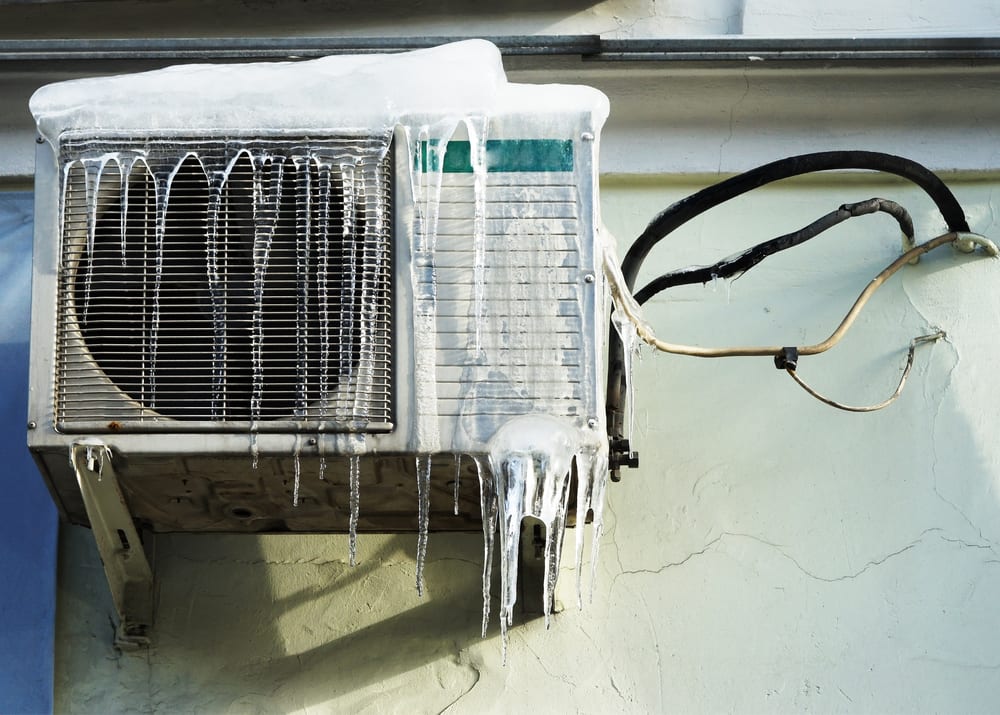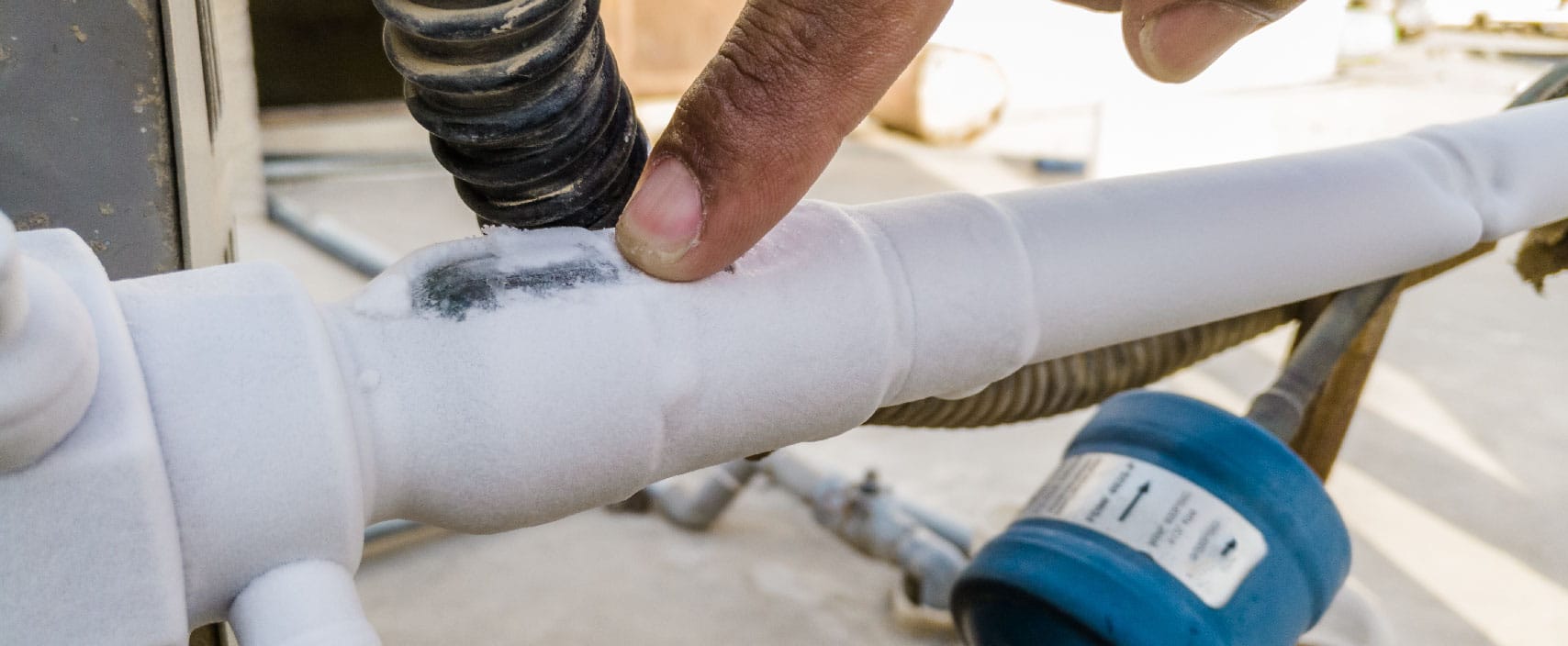Handling a Frozen AC Pipe - Advice for Addressing the Issue
Handling a Frozen AC Pipe - Advice for Addressing the Issue
Blog Article
How do you actually feel with regards to Why Is Ice On My Outside Air Conditione?

Intro
Uncovering that your AC pipe is frozen can be concerning, particularly throughout warm summertime when you rely upon your ac unit the most. Recognizing what to do in such a situation is important to stop more damage to your air conditioning system and guarantee your convenience inside.
Understanding the Causes
Several factors can contribute to the freezing of an AC pipe. Understanding these causes can assist you attend to the problem successfully.
Absence of Airflow
One typical root cause of a frozen air conditioning pipe is inadequate airflow. When the airflow over the evaporator coil is limited, it can trigger the coil to drop below freezing temperature, leading to ice development on the pipeline.
Reduced Refrigerant Levels
Inadequate refrigerant levels in your a/c system can likewise lead to a frozen pipeline. Reduced refrigerant levels can create the stress in the system to drop, resulting in the cold of wetness on the evaporator coil.
Cold Weather Conditions
In colder environments, freezing temperature levels outside can contribute to the cold of air conditioner pipelines. If your air conditioning unit is not appropriately shielded or if there are leakages in the ductwork, cold air can infiltrate the system, triggering the pipeline to ice up.
Dirty Air Filters
Unclean or clogged air filters can restrict air movement in your AC system, bring about various concerns, including an icy pipeline. It's necessary to change or clean your air filters regularly to ensure proper air flow and stop ice accumulation.
Indications of a Frozen Air Conditioning Pipe
Identifying the indicators of a frozen air conditioning pipeline is critical for prompt action.
Decreased Airflow
If you observe a significant decrease in air movement from your vents, it could suggest an icy pipeline.
Ice Buildup on the Pipe
Visible ice buildup on the refrigerant line or the evaporator coil is a clear sign of an icy AC pipe.
Strange Sounds from the Unit
Unusual noises, such as hissing or gurgling, originating from your AC system can indicate that there's ice existing on the pipeline.
Immediate Actions to Take
When confronted with an icy AC pipeline, it's vital to act quickly to prevent further damage to your cooling system.
Turning off the a/c
The first step is to shut off your a/c to prevent the system from running and intensifying the concern.
Looking for Blockages
Examine the area around the interior device for any obstructions that might be obstructing air flow, such as furnishings or drapes.
Thawing the Pipe
You can utilize mild approaches like positioning towels soaked in warm water around the frozen pipeline to aid thaw it slowly.
Safety nets
Taking preventive measures can aid prevent future occurrences of an icy air conditioning pipeline.
Routine Maintenance Checks
Set up normal upkeep contact a specialist HVAC service technician to make sure that your air conditioning system is running efficiently.
Changing Air Filters
Routinely replace or cleanse your air filters to stop air movement restrictions and maintain optimal performance.
Insulating Exposed Pipes
If your AC pipes are exposed to cold temperatures, take into consideration insulating them to avoid cold during winter season.
Looking For Professional Help
If DIY methods fall short to resolve the concern or if you're not sure about just how to continue, it's best to look for help from a qualified HVAC specialist.
When DIY Methods Fail
If your attempts to thaw the pipe or address other problems are unsuccessful, it's time to call in a professional.
Relevance of Hiring a Professional HVAC Technician
A qualified HVAC professional has the experience and devices needed to diagnose and fix problems with your air conditioning system safely and properly.
Final thought
Handling a frozen air conditioner pipeline can be a discouraging experience, but knowing just how to respond can help decrease damages and restore convenience to your home. By comprehending the causes, identifying the indications, and taking prompt activity, you can efficiently address the concern and stop future occurrences.
Frozen AC Line: Why It Happens & What To Do About It
A frozen AC line can be a rather peculiar sight in a place like Phoenix, Arizona where nothing ever freezes. In this post, we’ll discuss what makes an air conditioner line frozen – and what you can do about it.
Dirty Air Filters
Did you know that you should be cleaning or replacing your air filters on a monthly basis? Failing to do this can result in airflow issues that, in turn, cause your evaporator coils and lines to freeze over. You’ll notice a buildup of ice on both components, although the buildup on your pipes will, of course, be more evident unless you open your air condition up to reveal the coils.
What To Do About It
Give your air filter a good cleaning if it’s reusable. If not, replace the filter outright. Next, switch your air conditioner’s fan setting on and leave it there for 2-3 hours. This will draw warm air in, helping to thaw your evaporator coil. You can also check out this article for some tips on cleaning the coils themselves if you’d like to speed the process up. Before you switch the unit back to its normal state, make sure the supply vents are completely unobstructed and free of dust or other debris.
If you keep having this issue even after replacing your filters regularly, contact a local HVAC repair company and have them inspect your evaporator coil, ductwork, and any other components that may be at fault. If you live in the Phoenix, Arizona area, give American Home Water and Air a call.
Low Refrigerant Levels/Leakage
What To Do About It
Contrary to what air conditioner “recharge” companies often tell their clients about refrigerant, it should never need to be simply refilled. You see, refrigerant runs in what experts refer to as a “closed loop.” Refrigerant really shouldn’t be leaving that loop. If it is, you’ve got a leak.
Paying someone to come and pump more refrigerant into your system (aka “recharge” it) isn’t the solution. Doing that will simply kick the can down the road. Besides, refrigerant leaks can be harmful to the environment and people in your home.
Rather, you need to take care of the leak with the help of a technician. Check out this article for some more information about dealing with air conditioners that are leaking refrigerant. Before you contact a technician, switch your thermostat to the off position. Then, switch the fan setting on and let it run for 2-3 hours so the unit can thaw.
Improper Temperature Setting
Improper temperature settings can also cause a drop in your air conditioner’s pressure. What many people don’t realize is that air conditioners are actually designed to run when temperatures have fallen above roughly 60 degrees Fahrenheit. If you run the unit when it’s cold outside, you’ll run into many issues, including frozen components.

As a devoted person who reads about Why Is Ice On My Outside Air Conditione, I imagined sharing that chunk was a good idea. Do you know anybody else who is interested in the subject? Why not share it. Thanks for your time. Come back soon.
Schedule A Free Estimate Report this page